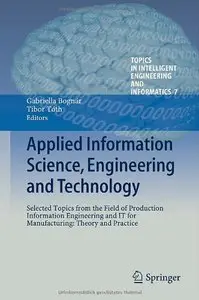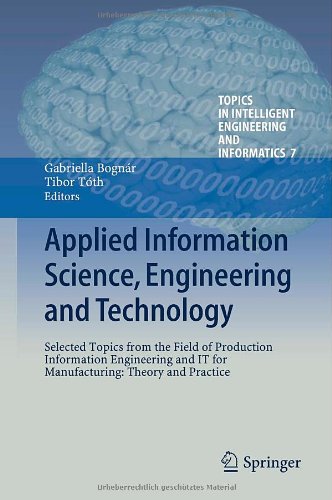Gabriella Bognár, "Applied Information Science, Engineering and Technology: Selected Topics from the Field of Production Information Engineering and IT for … in Intelligent Engineering and Informatics)"
ISBN: 331901918X | 2013 | PDF | 230 pages | 6.5 MB
ISBN: 331901918X | 2013 | PDF | 230 pages | 6.5 MB
The objective of the book is to give a selection from the papers, which summarize several important results obtained within the framework of the József Hatvany Doctoral School operating at the University of Miskolc, Hungary. In accordance with the three main research areas of the Doctoral School established for Information Science, Engineering and Technology, the papers can be classified into three groups. They are as follows: (1) Applied Computational Science; (2) Production Information Engineering (IT for Manufacturing included); (3) Material Stream Systems and IT for Logistics. As regards the first area, some papers deal with special issues of algorithms theory and its applications, with computing algorithms for engineering tasks, as well as certain issues of data base systems and knowledge intensive systems. Related to the second research area, the focus is on Production Information Engineering with special regard to discrete production processes. In the second research area the papers show some new integrated systems suitable for optimizing discrete production processes in a top-down way. The papers connecting with the third research field deal with different issues of materials stream systems and logistics, taking into consideration of applied mathematical models and IT-tools. The book makes an effort to ensure certain equilibrium between theory and practice and to show some new approach both from theoretical modelling aspect, as well as experimental and practical point of view.
No Mirrors Please!!!
Please inform me if link is dead!
Please inform me if link is dead!



